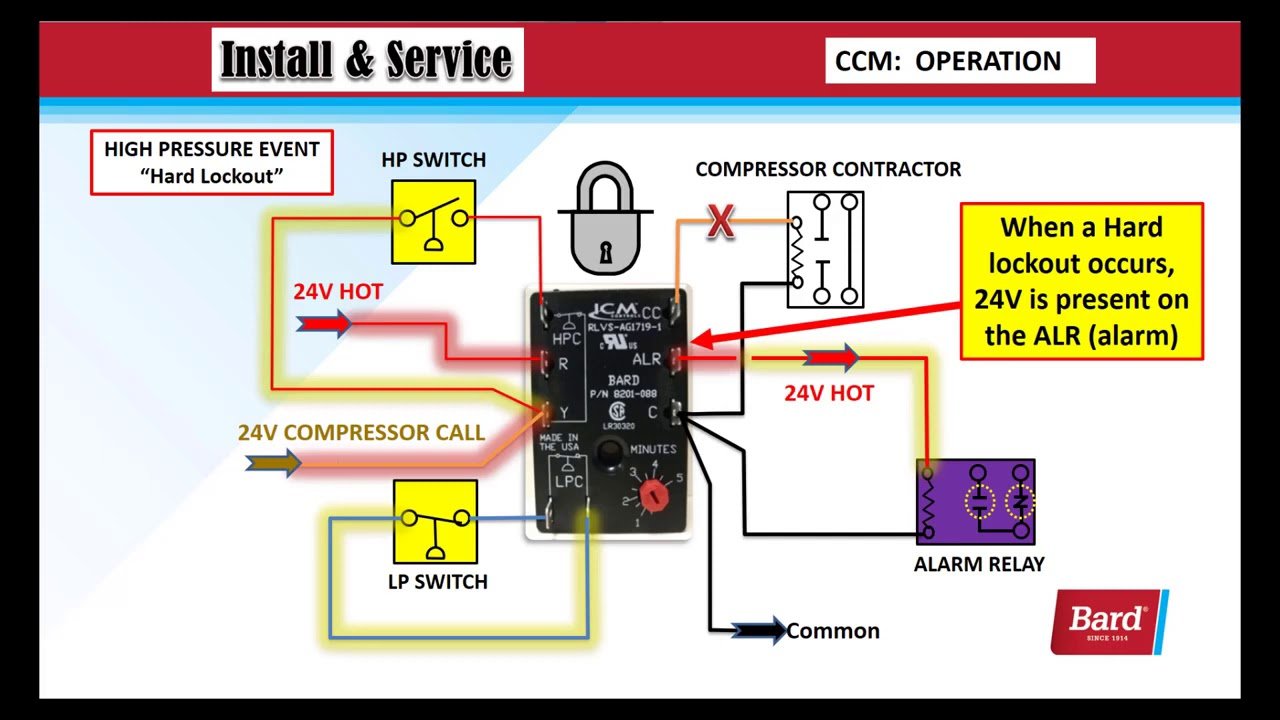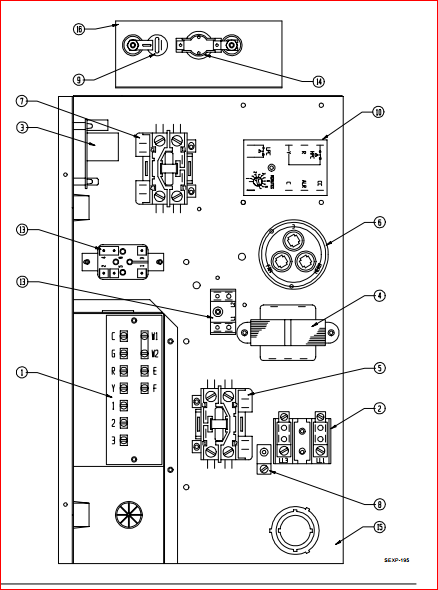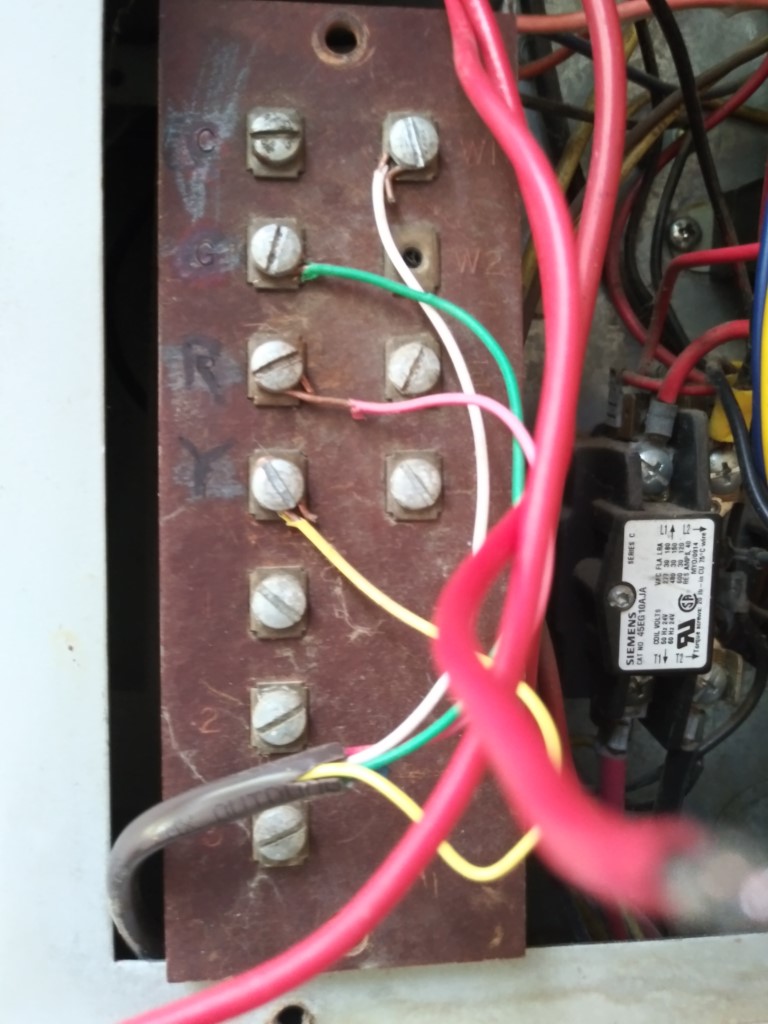
Bard air conditioner troubleshooting is a process of identifying and resolving issues with Bard air conditioning units. Whether it’s a lack of cooling, strange noises, or malfunctioning controls, troubleshooting can help pinpoint the problem and find a solution quickly.
We’ll explore some common Bard air conditioner issues and provide tips on how to troubleshoot them effectively. Whether you’re a homeowner or a professional HVAC technician, these troubleshooting techniques can save time and frustration by getting your Bard air conditioner back up and running smoothly.
So let’s dive in and learn how to troubleshoot Bard air conditioners like a pro.

Credit: www.doityourself.com
Common Bard Air Conditioner Problems
Bard air conditioners may encounter a range of common problems that require troubleshooting. From faulty thermostats to refrigerant leaks, understanding these issues can help in resolving them efficiently.
Weak Or No Cooling
One of the most common problems homeowners face with their Bard air conditioners is weak or no cooling. This can be both frustrating and uncomfortable, especially during hot summer months. There are several potential causes for this issue, and it’s important to identify the underlying problem in order to resolve it effectively.
One possible cause of weak or no cooling is a dirty air filter. Over time, the air filter can become clogged with dust, dirt, and other debris, restricting airflow and reducing the cooling capacity of the unit. To troubleshoot this issue, locate the air filter in your Bard air conditioner and check if it needs cleaning or replacement. By regularly cleaning or replacing your air filter, you can ensure proper airflow and maintain efficient cooling performance.
Another potential cause of inadequate cooling is a refrigerant leak. Refrigerant is the substance that absorbs heat from the indoor air and cools it before circulating it back into your home. If there is a leak in the refrigerant lines, the air conditioner won’t be able to cool the air effectively. In such cases, it’s recommended to seek professional assistance to locate and repair the leak, as handling refrigerant requires specialized skills and equipment.
Strange Noises
Do you hear strange noises coming from your Bard air conditioner? Unusual sounds can indicate underlying problems that need attention. By identifying the type of noise, you can troubleshoot and resolve the issue quickly.
One common noise is a grinding or squealing sound, which can be caused by worn-out or damaged fan belts. Over time, the belts can become loose or frayed, resulting in unusual sounds when the air conditioner is running. If you suspect the fan belts are the culprits, it’s best to contact a professional technician to inspect and replace the belts if necessary.
Another noise to be mindful of is a rattling or vibrating sound. This may indicate loose components or debris inside the air conditioner. Check for any loose panels or screws that may need tightening. Additionally, ensure that there are no foreign objects obstructing the fan or airflow. If the noise persists, consulting a professional technician is recommended to avoid further damage or hazards.
Water Leaks
Finding water leaks around your Bard air conditioner can be concerning. Not only can it damage your unit, but it can also lead to indoor water damage and potential mold growth. If you notice water pooling or dripping around your air conditioner, it’s essential to address the issue promptly.
One common cause of water leaks is a clogged condensate drain line. Over time, dirt, dust, and debris can accumulate in the drain line, restricting the flow of condensate water. This causes the water to back up and leak out of the unit. To resolve this issue, locate the condensate drain line and clear any obstruction using a thin brush or pipe cleaner.
Another potential cause of water leaks is a faulty condensate pump. The condensate pump is responsible for removing the condensate water from the air conditioner and safely draining it away. If the pump is malfunctioning, the water may not be properly pumped out, leading to leaks. In such cases, it’s best to seek professional assistance to diagnose and repair the issue.

Credit: m.youtube.com
Troubleshooting Weak Or No Cooling
If you find that your Bard air conditioner is not providing sufficient cooling or no cooling at all, there are a few steps you can take to troubleshoot the issue. By checking the air filters, inspecting thermostat settings, and examining the condenser unit, you can identify common problems and potentially resolve them on your own. Let’s dive into these troubleshooting steps.
Check Air Filters
One of the most common causes of weak or no cooling in an air conditioner is a dirty or clogged air filter. Air filters play a crucial role in maintaining proper airflow and keeping the system’s components clean. Over time, dust, dirt, and debris can accumulate on the filter, obstructing air circulation and reducing cooling efficiency.
To check and clean the air filters:
- Locate the air filter in your Bard air conditioner. It is usually found in the return grille or the indoor unit.
- Carefully remove the filter.
- Inspect the filter for dirt, dust, and debris buildup. If it appears dirty, it’s time to clean or replace it.
- If the filter is washable, gently rinse it under running water to remove the debris. Allow it to dry completely before reinserting it into the air conditioner.
- If the filter is not washable, replace it with a new one of the same size and type.
Inspect Thermostat Settings
The thermostat settings can also impact the cooling performance of your Bard air conditioner. Incorrect settings or a malfunctioning thermostat can cause the unit to underperform or not cool at all. Here’s how you can inspect the thermostat settings:
- Ensure that the thermostat is set to “Cool” mode, and the temperature is set lower than the current room temperature.
- Check the thermostat’s batteries if applicable. Low batteries can cause the thermostat to malfunction or display incorrect readings.
- If your thermostat has programmable settings, review the programmed schedule to ensure it aligns with your cooling needs.
- If you suspect a thermostat issue, consider replacing it or contacting a professional for further assistance.
Examine Condenser Unit
The condenser unit is an essential component of your Bard air conditioner, responsible for releasing heat from the system. Any issues with the condenser can lead to weak or no cooling. Here are some steps to examine the condenser unit:
- Ensure that the condenser unit is clean and free of debris such as leaves, dirt, or grass.
- Inspect the condenser coils for any signs of damage, corrosion, or blockages. Clean the coils if necessary using a soft brush or commercially available coil cleaner.
- Check the condenser fan to ensure it is running smoothly and not obstructed. Clean any dirt or debris that may affect its performance.
- If you notice any significant issues with the condenser unit, such as unusual noises or leaks, it’s recommended to seek professional help for repairs.
By following these troubleshooting steps and addressing any identified problems, you can improve the cooling performance of your Bard air conditioner. However, if the issues persist or you are unsure about performing these steps yourself, it’s best to consult a qualified HVAC technician for assistance.
Troubleshooting Strange Noises
When your Bard air conditioner starts making strange noises, it can be quite unsettling. These noises not only disrupt your peace of mind but also indicate potential issues with your unit. Troubleshooting strange noises is crucial to prevent any further damage and ensure the smooth operation of your air conditioner. In this section, we will cover the necessary steps to identify the source of the noise and fix any problems that may be causing it.
Identify The Source Of The Noise
To effectively troubleshoot the strange noises coming from your Bard air conditioner, the first step is to determine their source. Here are some common sources of noise in air conditioners:
- Fan and motor
- Loose parts
- Refrigerant circulation
- Ductwork
Let’s now focus on identifying the source of the noise by inspecting the fan and motor.
Inspect Fan And Motor
When the air conditioner is running, carefully listen for any unusual sounds coming from the fan and motor area. Here’s what you need to do:
- Turn off the air conditioner and safely disconnect the power.
- Remove any covers or panels that provide access to the fan and motor.
- Visually inspect the fan blades for any damage or obstructions, such as debris or dirt build-up.
- Check if the fan blades are properly aligned and securely attached to the motor shaft.
- Inspect the motor for any signs of wear, such as loose screws or worn-out bearings.
- If necessary, clean any debris from the fan and motor using a soft brush or compressed air.
- Ensure all covers and panels are securely reinstalled before reconnecting the power.
By thoroughly inspecting the fan and motor, you can often identify and resolve noise-related issues in your Bard air conditioner.
Check For Loose Parts
In addition to the fan and motor, loose parts can also cause strange noises in your air conditioner. These parts may include screws, bolts, or brackets that have come loose over time. To check for loose parts:
| Steps to Check for Loose Parts |
|---|
| Turn off the air conditioner and disconnect the power. |
| Inspect the interior and exterior of the unit for any visible loose parts. |
| Tighten any loose screws, bolts, or brackets using proper tools. |
| Ensure all components are securely fastened. |
| Reconnect the power and turn on the air conditioner to check if the noise persists. |
Checking for loose parts and tightening them can often eliminate the strange noises in your Bard air conditioner.
Troubleshooting Water Leaks
If your Bard air conditioner is experiencing water leaks, it’s important to troubleshoot the issue promptly. Leaks can arise from a variety of causes, such as clogged drain lines or faulty condensate pumps. Addressing these problems can help ensure optimal functionality of your air conditioning system.
Clear Condensate Drain Line
Check For Frozen Evaporator Coil
Inspect Condensate Pan For Cracks
Water leaks are a common issue that can occur with Bard air conditioners, and if left untreated, they can cause damage to your unit and even to your property. However, with some simple troubleshooting steps, you can quickly identify the cause of the water leaks and take the necessary actions to fix them. In this section, we will discuss three common troubleshooting methods to help you resolve water leaks in your Bard air conditioner.
Clear Condensate Drain Line
One of the primary causes of water leaks in Bard air conditioners is a clogged condensate drain line. Over time, dust, debris, and algae can accumulate in the drain line, obstructing the flow of condensate water and causing it to leak inside your unit. To clear the condensate drain line, follow these steps:
- Locate the drain line, which is typically a PVC pipe connected to the indoor unit or the exterior of your house.
- Using a wet/dry vacuum or a small brush, gently remove any debris or blockages from the drain line.
- Once cleared, pour a mixture of bleach and water (1:1 ratio) through the drain line to kill any algae or mold growth. This step will help prevent future clogs.
- Lastly, check if the condensate drain pan, located beneath the indoor unit, is clean and free from debris. Clean it if necessary to ensure proper water drainage.
Check For Frozen Evaporator Coil
Another common cause of water leaks in Bard air conditioners is a frozen evaporator coil. When the coil freezes, it can cause excess condensation to accumulate and drip inside your unit. To check for a frozen evaporator coil, follow these steps:
- Turn off your air conditioner and let it defrost naturally. This process may take a few hours.
- Inspect the evaporator coil for any signs of ice build-up. If you see ice, it indicates a problem with airflow or refrigerant levels.
- Check the air filters and replace them if they are dirty or clogged. Restricted airflow can cause the evaporator coil to freeze.
- If the problem persists, contact a professional HVAC technician to check the refrigerant levels and ensure there are no leaks in the system.
Inspect Condensate Pan For Cracks
If your Bard air conditioner’s condensate pan has cracks or damage, it can lead to water leaks. To inspect the condensate pan, follow these steps:
- Locate the condensate pan under the indoor unit of your air conditioner.
- Visually inspect the pan for any cracks, rust, or damage. Even small cracks can cause water to leak.
- If you notice any damage, replace the condensate pan with a new one. You can purchase a replacement pan from your local HVAC supplier.
- Once the new pan is installed, check for any leaks to ensure it is properly sealed.
By following these troubleshooting steps, you can effectively identify and resolve water leaks in your Bard air conditioner. Remember, if you are unsure or uncomfortable performing these troubleshooting steps yourself, it is always best to contact a professional HVAC technician for assistance.

Credit: www.doityourself.com
Frequently Asked Questions On Bard Air Conditioner Troubleshooting
How Do I Troubleshoot My Bard Air Conditioner?
To troubleshoot your Bard air conditioner, start by checking the thermostat settings, ensuring the unit is receiving power, cleaning or replacing the air filters, and clearing any debris around the unit. If the issue persists, contact a professional technician for further assistance.
Why Is My Bard Air Conditioner Not Turning On?
If your Bard air conditioner is not turning on, check the power supply, including the circuit breaker and power outlet. Ensure the thermostat is set to the desired temperature and that the air filters are clean. If the issue persists, it may indicate a more complex problem that requires professional attention.
How Often Should I Clean Or Replace The Air Filters Of My Bard Air Conditioner?
It is recommended to clean or replace the air filters of your Bard air conditioner at least once every 30 days. Regular maintenance of the air filters ensures optimal air quality and prevents the unit from working harder than necessary, leading to improved performance and energy efficiency.
Conclusion
Troubleshooting Bard air conditioners can be a straightforward process if you follow the necessary steps. By checking common issues like low refrigerant levels, dirty filters, or faulty thermostats, you can quickly identify and resolve the problem. Remember to perform regular maintenance, such as cleaning the unit and scheduling professional inspections, to ensure optimal performance.
With these tips, you can keep your Bard air conditioner running smoothly and efficiently throughout the year.






